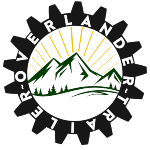Adding a propane system to a DIY camper can provide you with cooking, heating, and potentially refrigeration capabilities. However, working with propane requires careful planning and adherence to safety standards. Here are important considerations before adding propane to your DIY camper:
- Safety First:
- Propane is highly flammable and potentially hazardous if not handled properly. Prioritize safety at all stages of installation, operation, and maintenance.
- Regulations and Codes:
- Familiarize yourself with local and national regulations regarding propane systems. Compliance with codes ensures your safety and the safety of others on the road and at campgrounds.
- Professional Assistance:
- If you’re not experienced with propane systems, consider consulting or hiring a professional to design and install the propane system for you. They can ensure it meets safety standards.
- Propane Appliances:
- Determine which propane appliances you want to install, such as stoves, heaters, water heaters, and refrigerators. Choose appliances designed for RV or camper use.
- Propane Tanks:
- Choose appropriate propane tanks based on your needs and available space. Common options include refillable cylinders or larger onboard tanks. Ensure tanks are securely mounted and properly vented.
- Ventilation:
- Proper ventilation is essential to prevent propane leaks from accumulating in enclosed spaces. Install vents and ensure they remain unobstructed.
- Gas Detection System:
- Install propane gas detectors near the floor to provide an early warning in case of leaks. These detectors can save lives by alerting you to dangerous gas levels.
- Leak Testing:
- Conduct thorough leak tests after installation and periodically afterward. Always check for leaks before using any propane appliance.
- Installation Location:
- Determine the best location for your propane system components, such as tanks, appliances, regulators, and lines. Ensure they are easily accessible and well-protected.
- Materials and Fittings:
- Use materials and fittings approved for propane use to prevent corrosion and leaks. Follow manufacturer recommendations for installation.
- Gas Lines and Connections:
- Install gas lines and connections carefully, ensuring they are properly secured, supported, and protected from abrasion. Use appropriate fittings, and check for leaks using a leak detection solution.
- Regulators and Pressure:
- Install propane regulators to control the pressure from the tank to the appliances. Choose regulators compatible with the appliances’ requirements.
- Shut-Off Valves:
- Install shut-off valves to isolate different parts of the propane system. This allows you to shut off specific parts of the system if needed.
- Operational Knowledge:
- Educate yourself about the operation of propane appliances and their proper lighting procedures to prevent accidents and ensure efficient use.
- Maintenance:
- Regularly inspect your propane system for leaks, corrosion, and wear. Replace any damaged components promptly.
- Emergency Preparedness:
- Have a plan for dealing with propane-related emergencies, such as leaks or fires. Keep a fire extinguisher rated for propane fires within easy reach.
Remember that propane systems require careful attention to detail and safety. If you’re unsure about any aspect of adding propane to your DIY camper, consult professionals who are experienced with propane systems to ensure a safe and enjoyable camping experience.

inderal 10mg drug – inderal 10mg sale methotrexate 10mg drug